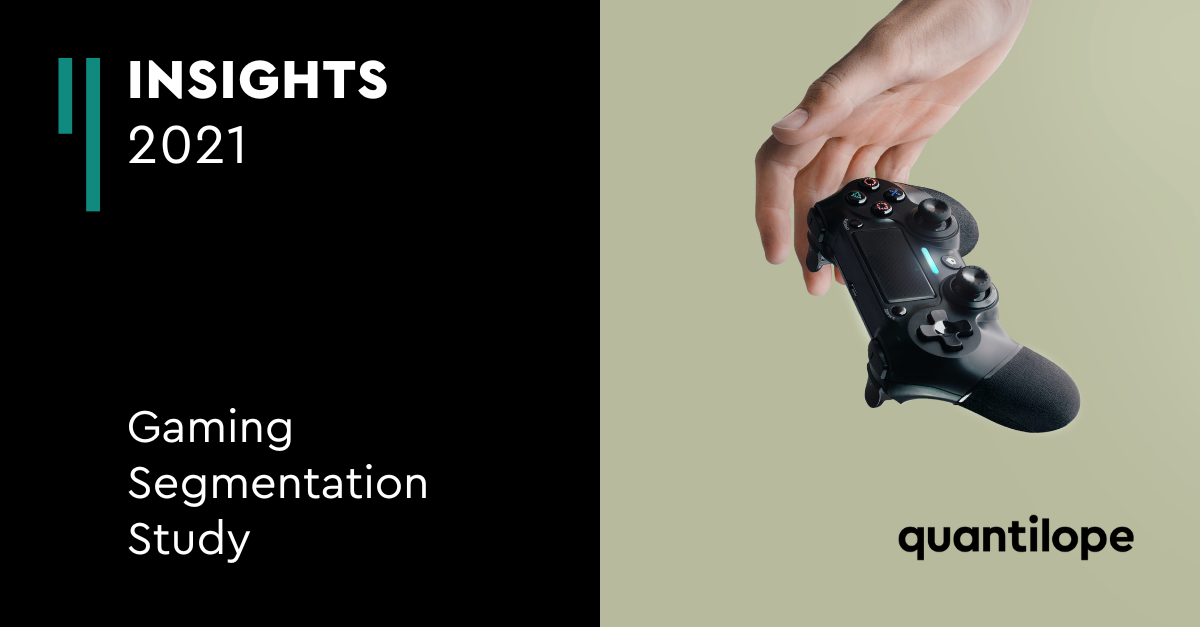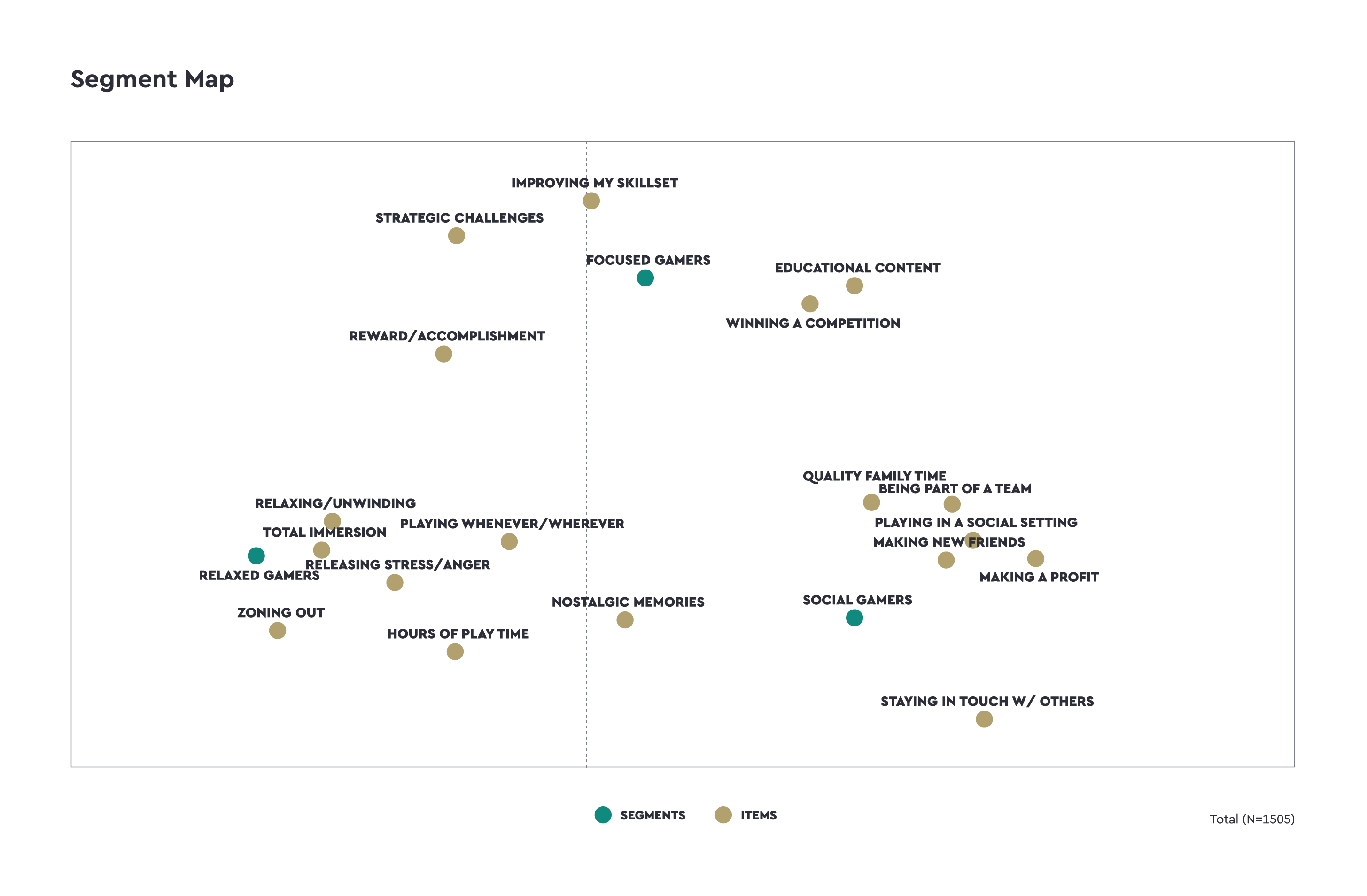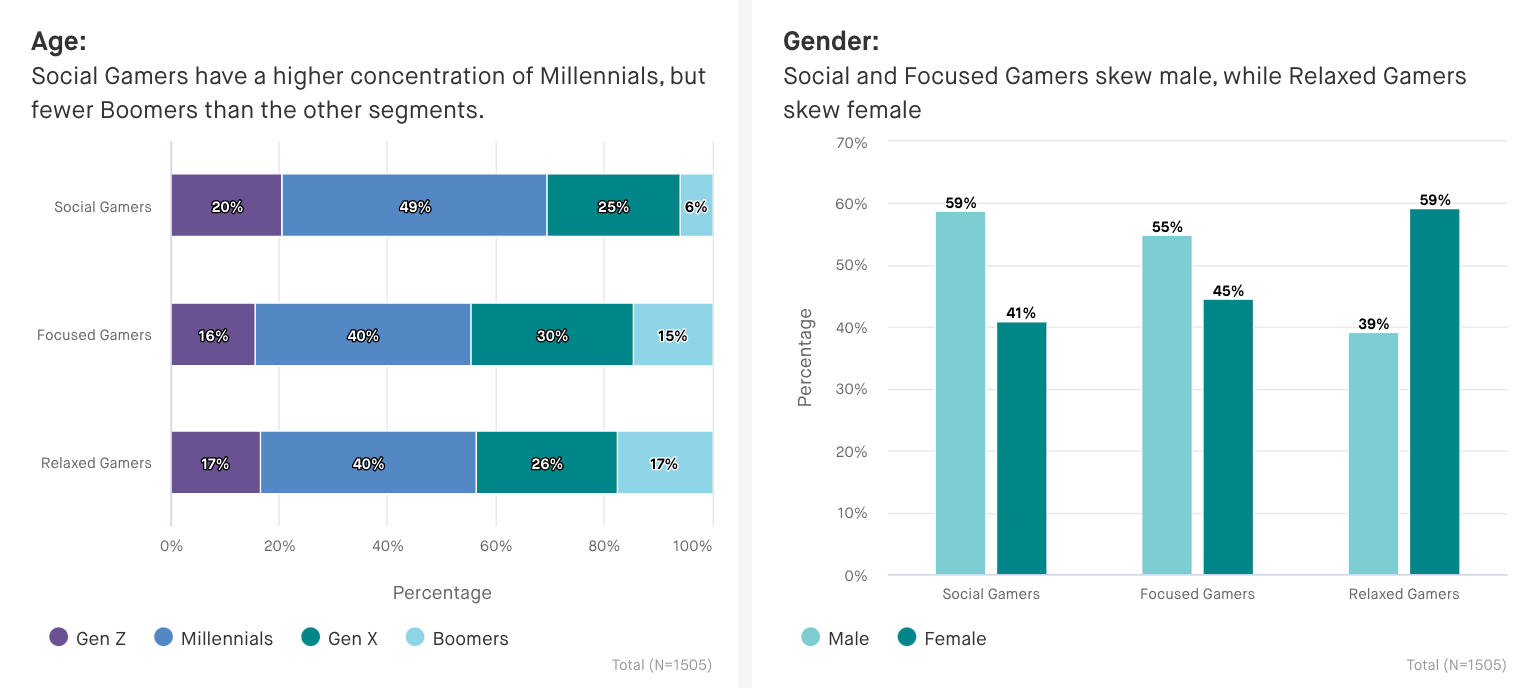quantilope's Gaming Segmentation Study

To showcase quantilope’s latest automated, advanced method: Segmentation, we surveyed n=1505 US Gamers to divide the overall Gaming market into actionable segments.
Context on quantilope's segmentation approach:
We chose to program a need-based segmentation because it is considered the ‘gold standard' in segmentation work. That’s because need-based segmentation allows clients to deeply understand the motives that impact future behavior, and/or areas to improve on, not just surface-level characteristics. Further, quantilope’s ability to segment on consumer needs, yet still having the power to automatically profile the segments on demographic, behavioral, or psychographic data makes this an ‘all-inclusive’ approach.
Through the power and ease of automation, quantilope’s segmentation captures insights at a fraction of the time it takes with other vendors, is intuitive in nature yet complex in results, and provides guaranteed quality without risk of manual errors.
US Gamer Findings:
To show our segmentation in action, we dove into the US Gaming market. We defined Gamers as those who play video games at least every few months and allowed the sample to fall out naturally in terms of age, gender, and region.
The segmentation starts with a drag + drop of this method from our methods list. This initiates a MaxDiff which forces respondents to make tradeoffs between various need-statements related to their gaming experience, such as: ‘Strategic challenges’, ‘Zoning out’, or ‘Making new friends’.
After capturing consumer responses, our advanced, machine learning algorithm automatically went to work on the backend, taking the results from the MaxDiff, performing a cluster analysis, and generating a recommended number of segments. This left us with three* clearly defined Gaming segments, as shown in the segmentation map below:
*this recommended output resulted in three segments based on this specific study's data, though a segmentation output can recommend anywhere between three and seven segments.

We can interpret this map by the proximity of gaming needs (in gold) to segments (in green). These segments were named numerically by default (i.e. Segments 1, 2, and 3). As you begin to analyze this output and observe the clear differentiation in what each segment considers important to their gaming experience, you can define actual names for each of your segments, as we've done below:
- Relaxed Gamers place high importance on aspects such as ‘Relaxing/Unwinding’, ‘Releasing stress/anger’, and ‘Zoning out’.
- Focused Gamers place high importance on aspects such as ‘Strategic challenges’, ‘Improving my skillset’, and ‘Winning a competition’ such as esports.
- Social Gamers place high importance on aspects such as ‘Quality family time’, ‘Playing in a social setting’, and ‘Staying in touch with others’.
Immediately we can start to craft a story around these groups based on what they prioritize as gaming needs. However, our need-based segmentation approach also allows us to profile these segments further using any other behavioral or demographic question asked throughout the survey. For example, we can filter down each gamer persona on their age and gender distributions to see how they compare to one another. Below we see that Social gamers have a significantly higher concentration of millennials, and Relaxed Gamers are predominantly Female.

For more findings on US Gamers and our automated segmentation approach, access the full Gamer Segmentation dashboard below.
Access the dashboard now!
